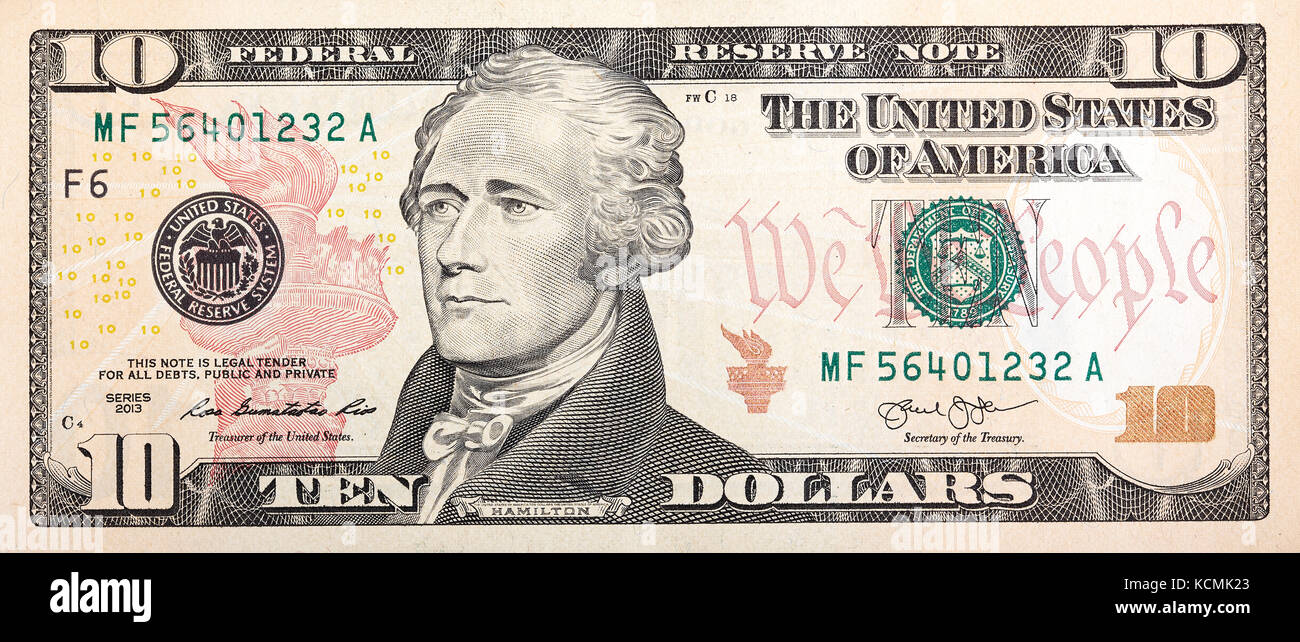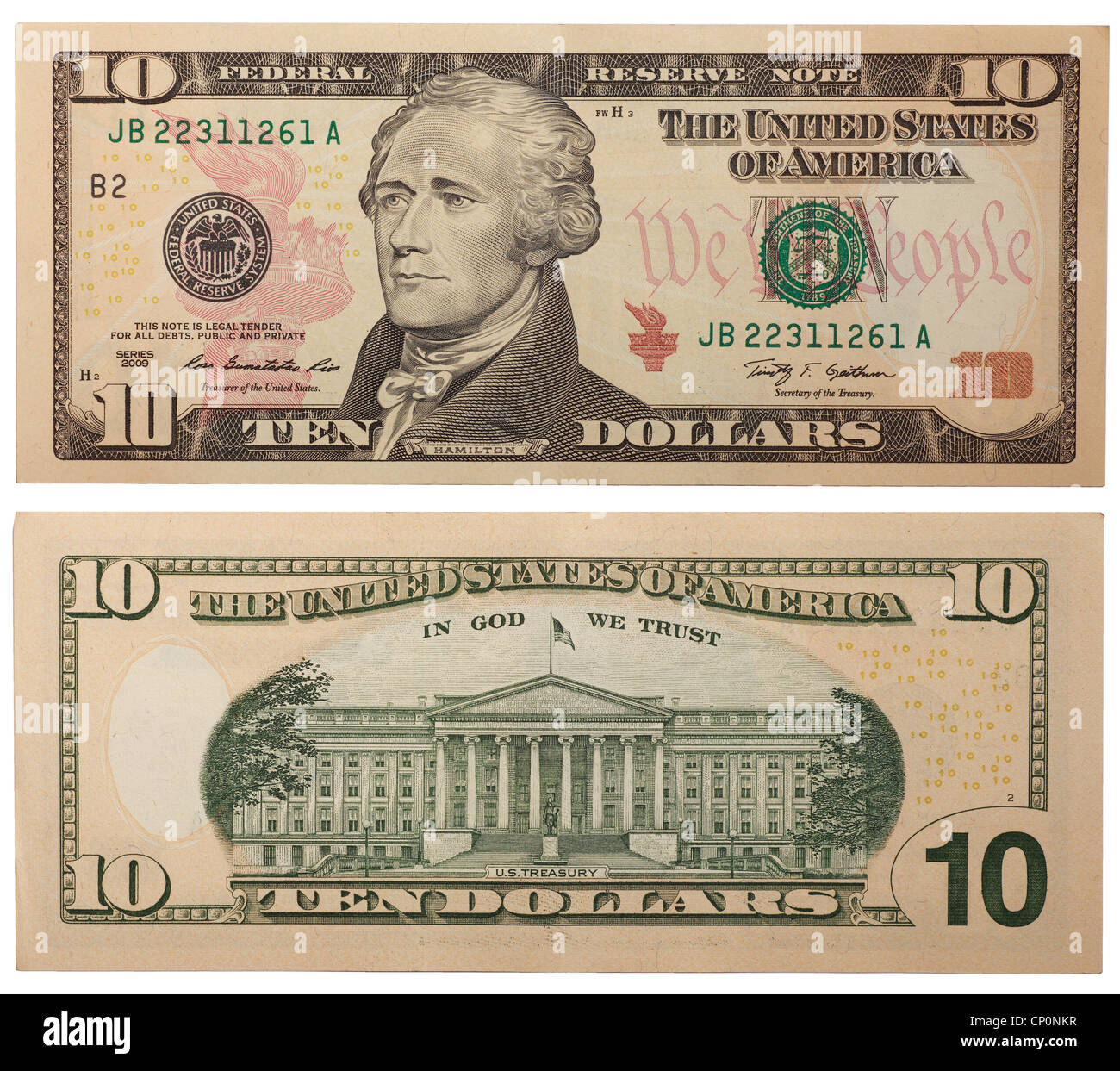What secrets does the humble ten-dollar bill hold? Beyond its everyday utility, the currency offers a fascinating glimpse into American history, artistry, and the ever-evolving world of finance.
The United States ten-dollar bill, a staple in wallets and cash registers across the nation, is much more than just a medium of exchange. It's a miniature work of art, a symbol of national identity, and a constantly changing piece of American history. Featuring the portrait of Alexander Hamilton, the first Secretary of the Treasury, the bill has undergone numerous design alterations since its inception, reflecting advancements in technology, security concerns, and evolving aesthetic sensibilities.
The $10 bill, in its current form, showcases a portrait of Alexander Hamilton, a Founding Father whose contributions to the financial system of the United States are undeniable. The bill also includes images of the U.S. Treasury Building on the back, a testament to the institution he helped establish. It also incorporates intricate security features, designed to deter counterfeiting and maintain public trust in the currency. The Bureau of Engraving and Printing is constantly working on updates to enhance the security measures, while simultaneously acknowledging the importance of preserving historical legacy.
- Aishah Sofey Onlyfans Leak Updates Support What You Need To Know
- Tamilblastersac What You Need To Know Safety Advice
| Attribute | Details |
|---|---|
| Subject of the Portrait | Alexander Hamilton |
| Role of Hamilton | First U.S. Secretary of the Treasury |
| Other Imagery | Torch of the Statue of Liberty, U.S. Treasury Building |
| Dominant Color | Green |
| Denomination | $10 |
| Issuing Authority | United States Department of the Treasury |
| First Issued | 1862 (as United States Notes) |
| Website for Further Information | U.S. Currency Education Program |
One might wonder, how does the value of this bill fluctuate? The value of a ten-dollar bill is, of course, fixed in terms of its face value. However, the historical and collectible value can vary greatly. Certain bills, due to their rarity, condition, or unique serial numbers, can fetch prices far exceeding their face value among collectors. This aspect transforms the simple bill into an object of interest for numismatists and history buffs alike. The demand for such bills is driven by several factors, including their historical significance, the condition of the note, and the presence of any special features.
The design of the ten-dollar bill has seen a number of transformations over the years. The current design reflects modern security measures, yet it pays homage to earlier iterations by incorporating familiar elements. The obverse, or front, of the bill, prominently features Alexander Hamilton. The reverse side often depicts the U.S. Treasury Building. These elements, along with other subtle design choices, create a cohesive visual narrative that embodies the values and aspirations of the United States. The series of design changes not only reflect the evolution of security measures but also the artistic sensibilities of the times, showcasing the continuous refinement of currency design.
The bill's journey through time is marked by the use of different types of paper, printing techniques, and security features. The early notes, like those issued in the 19th century, were often larger in size and simpler in design. As technology advanced, so too did the sophistication of the bill, leading to the incorporation of watermarks, color-shifting ink, and microprinting to prevent counterfeiting. The current notes incorporate advanced anti-counterfeiting measures, such as a security thread and color-shifting ink, that make it very difficult to replicate. The design changes over time include evolving the portrait, adding new features like microprinting, and incorporating the use of advanced printing techniques.
The Bureau of Engraving and Printing plays a crucial role in the production of the ten-dollar bill. They are responsible for the design, engraving, and printing of all U.S. currency, using advanced technologies and security protocols. The printing process involves multiple steps, including creating the intaglio plates used for printing the portraits and other details, as well as incorporating the security features that protect against counterfeiting. The Bureau works tirelessly to ensure the integrity and security of the currency supply, while also meeting the publics demand for fresh bills. These include using specialized inks and paper, each designed to make counterfeiting more difficult.
The average life of a ten-dollar bill in circulation is around 18 months. The constant handling and circulation of the currency cause wear and tear, eventually leading to its replacement. The Federal Reserve Banks are responsible for distributing new bills and removing those that are damaged or worn out. This is necessary to maintain the currency's usability and appearance. The continuous cycle of production, circulation, and replacement is managed efficiently by the Federal Reserve Banks and the Bureau of Engraving and Printing. The Bureau ensures that the old currency is properly destroyed, and then new currency will be printed for circulation to keep up with the demand. The average lifespan also depends on environmental factors.
It's worth noting that the design of the ten-dollar bill is not static; it will undergo a significant redesign in 2026. This initiative, spearheaded by the U.S. Bureau of Engraving and Printing, aims to enhance security features against counterfeiting and modernize the dollar's appearance. The redesign will incorporate cutting-edge security measures, while maintaining a design that honors the nation's history and values. This ongoing process is a testament to the commitment to protecting and evolving the currency system.
The ten-dollar bill, like all forms of currency, is also an economic indicator. The volume of ten-dollar bills in circulation, and trends in their use, can provide insights into economic activity and consumer behavior. The Federal Reserve monitors these trends, along with the overall health of the economy. These insights are then used to inform monetary policy decisions and ensure economic stability. This data helps in making critical decisions on the value of the bills.
The ten-dollar bill isnt just a tool for daily transactions; it's a collectible item for those fascinated by history and the art of currency. Rare bills, those with unique serial numbers, or those in exceptional condition, are highly sought after. The study of these bills provides a deeper understanding of the history of finance and the evolution of design and technology. Some examples of collectibles include star notes, which are replacement notes, and bills with unusual serial numbers that can be valuable. The value of these bills is heavily influenced by the condition of the bill, serial number, and their rarity.
One crucial aspect of currency is preventing counterfeiting. With the rise of advanced printing and scanning technology, the risks of counterfeiting have also increased. However, the Bureau of Engraving and Printing and the Federal Reserve employ sophisticated security features, such as color-shifting ink, watermarks, and microprinting, to make it exceptionally difficult to replicate genuine currency. These security features and others are continuously updated to stay one step ahead of counterfeiters. The goal is to maintain public trust and confidence in the nation's currency.
In conclusion, the ten-dollar bill transcends its utilitarian role. Its a reflection of American history, a canvas for artistic expression, and a symbol of the economic system. The bills design, its security features, and its ever-evolving nature provide a fascinating case study of the intersection of art, finance, and technology. From its initial design to its future redesign, the ten-dollar bill shows an ongoing story, one that continues to evolve with the times and will continue to be a significant part of the American experience. As currency itself continues to modernize, with digital currencies gaining traction, the physical ten-dollar bill will continue to be a reminder of the rich history and values which makes it important.
- From Prison To Run The Lynette Barnett Terry Banks Story
- Sophie Rain Spiderman Leak What You Need To Know Updates


